#thermal insulator
Text

Energikey is a thermal Management company dealing and seller of various Thermal products to learn more details contact us: https://www.energikey.com/
0 notes
Text

district 1 citizens are cooked their goat is washed
#cana puts out ame thigh high module prize figurines and acquires so much money he doesn't know what to do with it.#🤦♂️#tasteful bit of uuh den10 tights underneath for extra thermal insulation#aph america#slop#gangstalia#hetalia#i wanted to draw more rn but i can't this is coming out garbage. 🤦♂️idk. i wanted to draw him miserable in the rain like this#frankly.#aph russia#myart
139 notes
·
View notes
Text
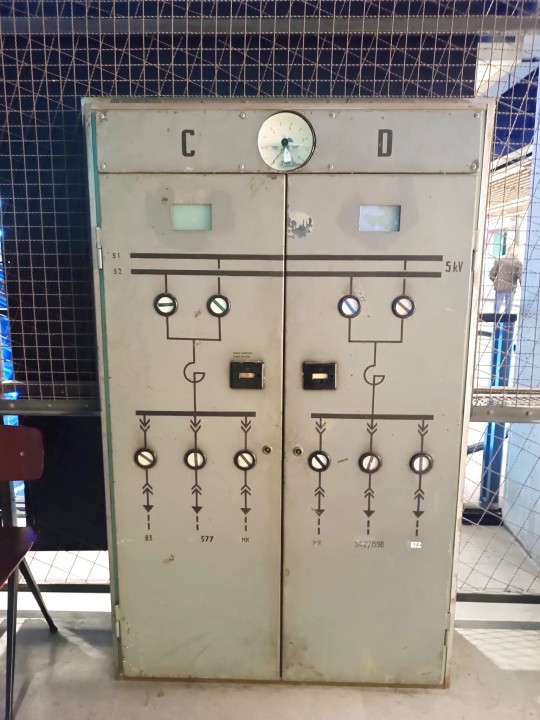

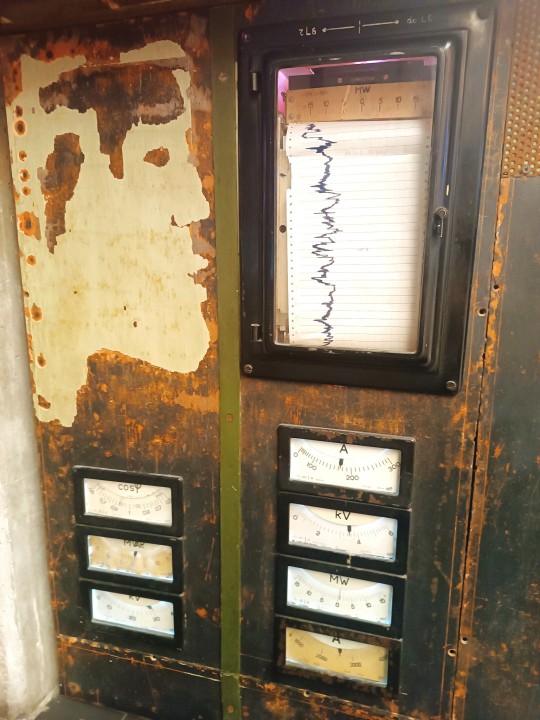
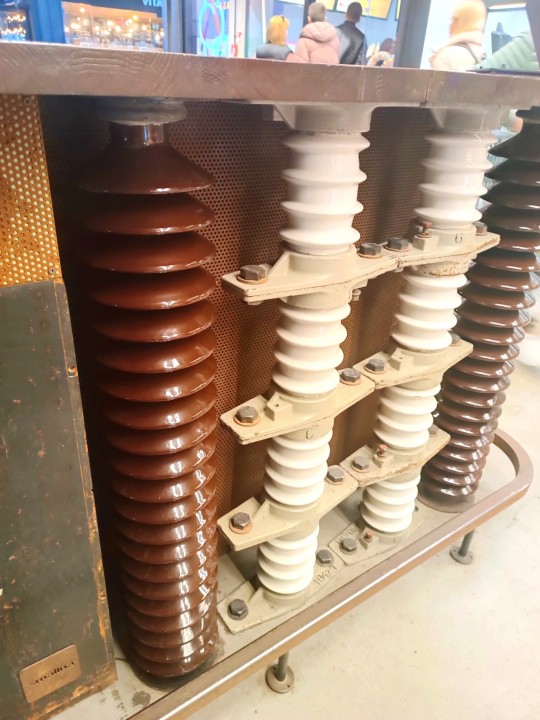
Powiśle Power Plant 🏭, Warsaw
#aesthetic#cyberpunk#tech#tech aesthetic#technology#old tech#power plant#vintage#electricity#engineering#electrical engineering#industrial#electrical engineer#elektrostantsiyapost#power engineering#electrical energy#switchgear#generator#turbine#insulators#techwave#techcore#thermal power plant#coal power plant#circuits#power generation#warsaw#poland#powiśle power plant#decor
119 notes
·
View notes
Text

A novel thermal insulation material for ultra-high temperature applications: Hierarchical porous high-entropy ceramics
Thermal insulation material is a critical part of the thermal protection system (TPS) of hypersonic vehicles. Recently, high-entropy ceramics have attracted great attention in thermal insulation for their low thermal conductivity due to the scattering of phonons by multi-components and distorted lattices. Among the various options available, porous high-entropy carbide (PHEC) ceramics have emerged as promising candidates for TPS due to their inherent characteristics such as high melting point, excellent high-temperature stability, low density, and superior thermal insulation properties.
Generally, porous high-entropy carbide ceramics have been fabricated using various methods such as template, direct foaming, and partial sintering. To synthesize these ceramics, metal carbides or oxides are commonly used as starting materials by solid-state methods. This requires extensive milling to disperse the various components and extremely high processing temperatures to accelerate the diffusion of atoms.
Read more.
#Materials Science#Science#High temperature materials#Ceramics#Porosity#High entropy materials#Insulators#Thermal conductivity#Materials processing
10 notes
·
View notes
Text

It's a cycle that never ends
#It's a cycle that never ends#poverty#a city in germany made thermally insulated pods for homeless people to sleep in.#hip hop#homeless#extortion#exploitation#class war#eat the rich#eat the fucking rich#ausgov#politas#auspol#tasgov#taspol#australia#fuck neoliberals#neoliberal capitalism#anthony albanese#albanese government
7 notes
·
View notes
Text
Unraveling the Growth Potential of the Geofoams Market: Global Outlook
The global geofoams market size is expected to reach USD 972.6 million by 2027, expanding at a CAGR of 2.7%, according to a new report by Grand View Research, Inc. Factors such as availability of geofoams at low cost coupled with its superior strength and durability are projected to fuel the market growth. Expansion of the construction industry across the globe coupled with the infrastructural developments in economies such as India, China, Brazil, Mexico, Saudi Arabia, and others is expected to propel the demand for geofoams over the forecast period. In addition, maintenance of the existing infrastructure in developed nations is likely to drive the growth of the market.
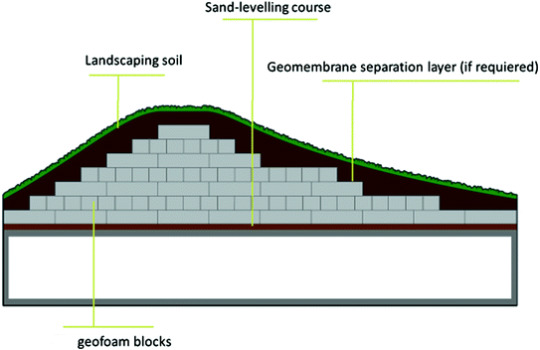
Geofoams Market Report Highlights
The expanded polystyrene geofoams segment accounted for USD 508.2 million in 2019 and is projected to expand at a CAGR of 3.1% from 2020 to 2027. The compatibility of the product has resulted in its increasing adoption for applications including roads and highway construction, building and infrastructure, and others
The road and highway construction application segment accounted for 38.07% of the total market and is projected to expand at a CAGR of 3.4% from 2020 to 2027 on account of the rising infrastructural growth across the developing economies including China, India, Brazil, UAE, Saudi Arabia, and others
Asia-Pacific accounted for USD 278.5 million in 2019 and is estimated to expand at a CAGR of 3.2% from 2020 to 2027 owing to the rising demand for road pavement, which is anticipated to further benefit the growth
China accounted for the highest market share in Asia Pacific on account of the rapidly expanding construction industry in the country
Europe market is estimated to expand at a CAGR of 2.8% owing to the rising number of construction and infrastructural activities in economies including Spain, Italy, and others
For More Details or Sample Copy please visit link @: Geofoams Market Report
Geofoams are increasingly used in the construction industry as it helps in suppressing the noise and vibrations. In addition, it is easy to handle and does not require any special equipment for installation. The product is increasingly used in the railway track systems, below the refrigerated storage buildings, storage tanks, and others to avoid ground freezing.
The geofoams undergo chemical changes when it comes in contact with petroleum solvents. It turns into a glue-type substance, thereby losing its strength. This factor is projected to limit the use of geofoams in the construction industry which is projected to restrict the industry growth over the forecast period.
#Geofoam#Expanded polystyrene (EPS)#Geofoam blocks#Construction materials#Road and highway construction#Retaining walls#Geotechnical engineering#Soil stabilization#Environmental protection#Earthquake resistance#Noise and vibration control#Water management#Hydrostatic pressure#Thermal insulation#Structural stability
8 notes
·
View notes
Text



internet finds
If you want this project to continue, you can use the Paypal donation button on the web page of the blog. Any donation is welcome.
#overalls#dungarees#carhartt#carhartt overalls#insulated#insulated overalls#beard#countryboy#country guy#cute#cute guy#country boy#hot#hot guy#body shirt#thermal#cool#cool look#forest#street style#hands in pockets
9 notes
·
View notes
Text
Basalt Fiber Reinforcement in Construction: A Sustainable Paradigm Shift
Introduction
In the contemporary construction landscape, a notable shift towards sustainable and eco-friendly building materials is underway. Among the alternatives gaining prominence is basalt fiber reinforcement, positioning itself as a compelling substitute for traditional steel reinforcement. This transition is fueled by a collective desire to reduce environmental impact and elevate the…
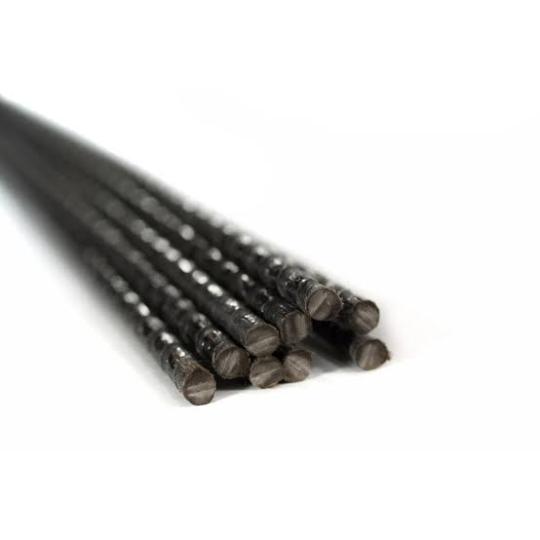
View On WordPress
#alternative to steel reinforcement#basalt fiber applications#basalt fiber properties#Basalt fiber reinforcement#basalt mesh in concrete#BFRP composites#construction industry sustainability#corrosion-resistant materials#durability in construction#eco-friendly building#environmental impact of construction#future of construction materials.#green building practices#lightweight construction materials#seismic resilience in buildings#steel replacement in construction#strength-to-weight ratio#Sustainable Construction Materials#sustainable structural design#thermal insulation in construction
2 notes
·
View notes
Text
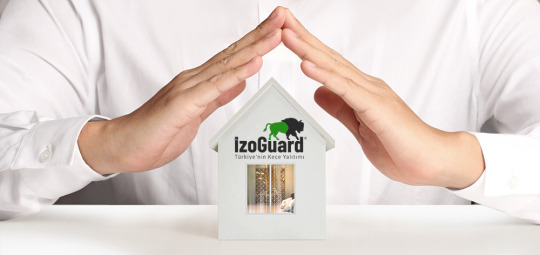
Isı yalıtım ihmale gelmez.Yaz aylarında serin ve konforlu bir arada yaşamak istiyorsanız evinize ısı yalıtımı yaptırmayı ihmal etmeyin. #izoGuard #ısıyalıtım #
#izoguardkeçe#yalıtım keçesi#izolasyon keçesi#ısı yalıtım#izoGuard#home#insulation#thermal insulation#sound insulation
4 notes
·
View notes
Photo

Keep warm this winter with our new thermal honeycomb blinds. They will also keep your room cool in the summer.
2 notes
·
View notes
Text
The Key to Electronic Success: Thermal Interface Materials for Efficiency and Reliability
Thermal Interface Material come in various forms, each tailored to specific applications and needs:
Thermal Greases and Compounds: These are semi-liquid materials that fill gaps effectively, ensuring intimate contact between surfaces. They are typically used in applications with irregular surfaces, such as CPU installations.
Thermal Pads: These are solid, pre-formed pads with good conformability. They are ideal for applications where the even distribution of pressure is crucial.
Phase Change Materials: These materials change phase from solid to liquid during operation, ensuring optimal contact. They are well-suited for applications requiring minimal pump-out and a consistent interface.
Thermal Adhesives: In addition to their thermal properties, these materials offer adhesive qualities, making them ideal for applications that require both heat dissipation and component fixation.
Thermal Gap Fillers: These are highly compressible materials, perfect for applications with varying gap distances. They conform to surface imperfections and provide excellent thermal conductivity.
Read more blog : Unlocking the Secret World of Thermal Insulation: Click to Learn More
#thermal gap pads#thermal interface materials market#thermal management#thermal graphite sheet#books#energikey#thermal adhesive#thermal products company#silica grease#thermal gap filler#thermal insulator
0 notes
Text
How Will Insulation Keep Heat Out?
Insulation plays a crucial role in keeping heat out of buildings, particularly during hot weather. It does this primarily through its thermal resistance, measured by the R-value; the higher the R-value, the better the insulation resists heat flow, which helps maintain a cooler indoor environment. Certain types of insulation, such as radiant barriers, are designed to reflect heat away from living spaces, making them especially effective in warm climates when installed in attics or on roofs. Additionally, effective insulation helps seal gaps and cracks in walls, ceilings, and floors, minimizing the flow of hot air into your home. The choice of insulation material also matters; options like fiberglass, foam, and cellulose each offer different benefits that contribute to overall thermal performance. Layering various types of insulation can further enhance their effectiveness. If you want to know more, read this blog!
0 notes
Text
Researchers have demonstrated the ability to engineer materials that are both stiff and capable of insulating against heat. This combination of properties is extremely unusual and holds promise for a range of applications, such as the development of new thermal insulation coatings for electronic devices.
"Materials that have a high elastic modulus tend to also be highly thermally conductive, and vice versa," says Jun Liu, co-corresponding author of a paper on the work and an associate professor of mechanical and aerospace engineering at North Carolina State University. "In other words, if a material is stiff, it does a good job of conducting heat. And if a material is not stiff, then it is usually good at insulating against heat.
"But there are instances where you'd want materials that are stiff, but are also good insulators," Liu says. "For example, you might want to create thermal insulation coatings to protect electronics from high temperatures. Historically, that's been a challenge.
Read more.
#Materials Science#Science#Stiffness#Thermal conductivity#Insulators#Strength of materials#North Carolina State University#Perovskites#2D materials#Elasticity
11 notes
·
View notes
Text

A city in Germany made thermally insulated pods for homeless people to sleep in.
#A city in Germany made thermally insulated pods for homeless people to sleep in.#europe#germany#homeless#poverty#class war#rent is theft#landlords are parasites#ausgov#politas#auspol#tasgov#taspol#australia#fuck neoliberals#neoliberal capitalism#anthony albanese#albanese government
6 notes
·
View notes
Text
Window Insulation Film: Enhancing Comfort and Energy Efficiency
Window insulation film is a versatile and cost-effective solution for homeowners and businesses looking to improve energy efficiency, reduce utility costs, and maintain a comfortable indoor environment. In regions with extreme weather fluctuations like Melbourne, where summers can be hot and winters cold, insulating windows is essential to ensure thermal comfort and reduce heating and cooling expenses. Window insulation film is an affordable alternative to double-glazed windows and offers many other benefits.
What is Window Insulation Film?
Window insulation film is a transparent or tinted layer of material applied to the interior or exterior surface of windows. These films are typically made from polyester or other durable, high-quality plastics that can block heat, reduce UV radiation, and improve thermal insulation. Some films are designed specifically to prevent heat loss during the winter, while others focus on blocking excessive sunlight and reducing heat gain in the summer.

Benefits of Window Insulation Film
1. Improved Energy Efficiency
One of the primary reasons to install window insulation film is its ability to improve energy efficiency. By reducing heat transfer through windows, insulation films help maintain a stable indoor temperature. During the colder months, these films reduce heat loss by preventing warm air from escaping through windows, keeping your home or office warmer without overworking the heating system. In the summer, they reflect sunlight and prevent excessive heat from entering, reducing the need for air conditioning.
This improved energy efficiency translates to lower utility bills and a reduced carbon footprint. By minimizing the use of heating and cooling systems, window insulation films contribute to energy conservation, making them an environmentally friendly option for any property.
2. Enhanced Comfort
Window insulation film helps create a more comfortable living or working environment by maintaining consistent indoor temperatures. Without the discomfort of drafts or hot spots near windows, occupants can enjoy a more pleasant atmosphere throughout the year. The films also reduce glare, which can be especially beneficial in rooms with large windows where direct sunlight makes it difficult to work, watch TV, or use electronic devices comfortably.
3. UV Protection
Excessive exposure to ultraviolet (UV) rays can cause furniture, carpets, and other interior items to fade and deteriorate over time. Window insulation films can block up to 99% of harmful UV rays, extending the life of your belongings and protecting them from sun damage. Additionally, by blocking UV rays, the films also help reduce the risk of skin damage from prolonged indoor sun exposure.
4. Cost-Effective Alternative to Window Replacement
Replacing old windows with energy-efficient models can be expensive, especially if your home or business has multiple large windows. Window insulation film provides an affordable alternative, offering many of the same benefits as new windows at a fraction of the cost. It’s a practical solution for property owners looking to upgrade their energy efficiency without investing in a complete window replacement.
5. Easy Installation and Maintenance
Window insulation film is relatively easy to install and can be applied by professionals or as a DIY project. The process involves cleaning the window surface, applying the film, and smoothing out any air bubbles. Once installed, the film requires minimal maintenance—occasional cleaning with non-abrasive products is usually sufficient to keep it in good condition.
Choosing the Right Window Insulation Film
There are various types of window insulation films available, each designed for specific needs. Some films focus on blocking heat and UV rays, while others are designed to prevent heat loss in cold climates. When choosing window insulation film, consider factors such as the climate in your area, the direction your windows face, and whether you prefer a clear or tinted film.
For homes and offices in warmer climates, films with a high solar heat gain coefficient (SHGC) are ideal for reflecting heat. In colder regions, films that minimize heat loss through low emissivity (low-E) technology are more effective.
Conclusion
Window insulation film is an excellent investment for those looking to enhance their property’s energy efficiency, improve comfort, and protect interiors from sun damage. It offers a cost-effective alternative to window replacement while delivering significant benefits, from reduced energy bills to increased UV protection. Whether you want to keep your home cooler in the summer or warmer in the winter, window insulation film provides a practical and affordable solution.
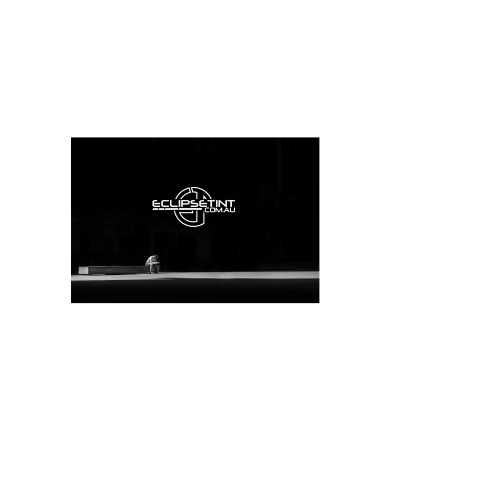
For More:
Contact Us: 61 1300 864 703
Email: [email protected]
Timings: Mon-Fri: 08:00 - 16:30
Visit Us: https://www.eclipsetint.com.au/
0 notes
Text
Building Thermal Insulation Market is Estimated to Witness High Growth Owing to Rising Construction Activities
Building thermal insulation refers to any material used in the construction industry that is designed to reduce the rate of heat transfer and minimize temperature fluctuations. Some common types of thermal insulation include fiberglass, mineral wool, expanded polystyrene, and cellular glass insulation. These materials provide resistance to heat flow and help keep the indoor temperature uniform. Thermal insulation plays a crucial role in managing energy costs, improving occupant comfort, and reducing a building's carbon footprint. The rising awareness about energy efficiency and the need to curb greenhouse gas emissions is propelling the demand for thermal insulation solutions across residential and commercial spaces.
Global building thermal insulation market is estimated to be valued at USD 36.68 Bn in 2024 and is expected to reach USD 49.13 Bn by 2031, exhibiting a compound annual growth rate (CAGR) of 4.3% from 2024 to 2031.
Rapid urbanization and industrialization have bolstered construction activities globally. Additionally, stringent government regulations regarding energy conservation and implementation of green building codes are driving the market's growth.
Key Takeaways
Key players operating in the Building Thermal Insulation market are Owens Corning, Rockwool International A/S, Johns Manville (Berkshire Hathaway), Knauf Insulation, Saint-Gobain, BASF SE, DuPont, 3M Company, Kingspan Group, GAF Materials Corporation, Celotex, CertainTeed, Armacell International S.A., Fletcher Building Limited, Insulation Corporation of America, Nitto Denko Corporation, Thermafiber, Inc., Sika AG, Isolatek International, and Huntsman Corporation.
The Building Thermal Insulation Market Demand offers significant opportunities stemming from rebates and tax credits on energy-efficient buildings. Many governments provide incentives to promote green construction and encourage homeowners to opt for insulation upgrades. Additionally, the development of bio-based and recyclable insulation materials presents new avenues for market participants.
The increased spending on infrastructure development and commercial real estate in emerging nations is fueling the global expansion of the building thermal insulation market. Asia Pacific is expected to witness lucrative growth due to rapid urbanization and growth in the residential sector in countries like China and India. Stringent energy codes in Europe and government incentives are also driving regional market demand.
Market Drivers
Rising construction activities are estimated to be the major market driver. According to statistics, the global construction industry grew by over 3% annually between 2010 to 2020. Further construction investments are expected to increase substantially with the economic recovery post-pandemic. The need for thermal insulation gains prominence with the construction of massive commercial buildings and infrastructure projects worldwide. As a result, the construction boom is propelling the building thermal insulation market.
Building Thermal Insulation Market PEST Analysis
Political: Regulations for energy efficiency in buildings are becoming more stringent in various countries to reduce energy consumption and carbon emissions. This is driving growth in the insulation market.
Economic: Rising disposable incomes along with growing construction activities globally is fueling the demand for building thermal insulation to reduce energy costs of buildings over their lifecycle.
Social: Increasing awareness about global warming and climate change is encouraging consumers to adopt green building practices including use of insulation materials.
Technological: Advanced insulation materials with low thermal conductivity and breathability are gaining popularity. Vacuum insulations panels (VIPs) offer ultra high performance but need more widespread commercialization.
Europe accounts for the largest share of the global building thermal insulation market in terms of value. Strict regulations regarding energy efficiency in the EU coupled with the large existing building stock driving retrofits and renovation activities support market growth. Asia Pacific is the fastest growing regional market propelled by ongoing construction boom, rising incomes, infrastructure investments and regulations promoting green buildings in countries like China and India.
The Middle East and North Africa region presents considerable opportunities. Rapid infrastructure development accompanied with the development of new cities will propel market demand. At the same time, legislation requiring energy efficient homes and commercials buildings are anticipated to facilitate regional growth over the forecast period.
Get more insights on Building Thermal Insulation Market
Also read related article on Graphene Market
Discover the Report for More Insights, Tailored to Your Language
French
German
Italian
Russian
Japanese
Chinese
Korean
Portuguese
About Author:
Ravina Pandya, Content Writer, has a strong foothold in the market research industry. She specializes in writing well-researched articles from different industries, including food and beverages, information and technology, healthcare, chemical and materials, etc. (https://www.linkedin.com/in/ravina-pandya-1a3984191)
#Coherent Market Insights#Building Thermal Insulation Market#Building Thermal Insulation#Thermal Insulation#Energy Efficiency#Home Insulation#Heat Retention#Insulation Materials#Building Energy Performance#Thermal Barrier
0 notes